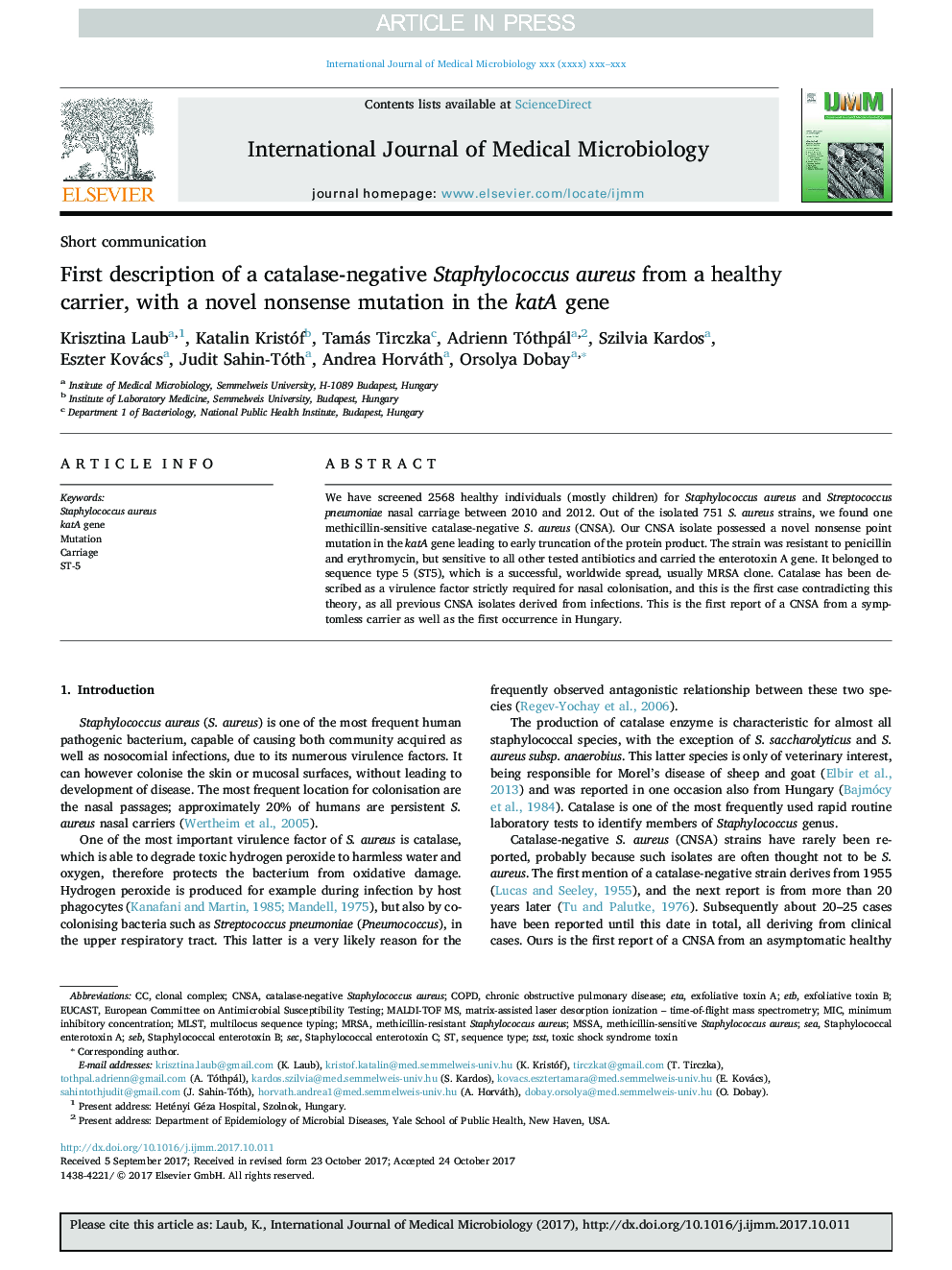| Article ID | Journal | Published Year | Pages | File Type |
|---|---|---|---|---|
| 8384990 | International Journal of Medical Microbiology | 2017 | 4 Pages |
Abstract
We have screened 2568 healthy individuals (mostly children) for Staphylococcus aureus and Streptococcus pneumoniae nasal carriage between 2010 and 2012. Out of the isolated 751 S. aureus strains, we found one methicillin-sensitive catalase-negative S. aureus (CNSA). Our CNSA isolate possessed a novel nonsense point mutation in the katA gene leading to early truncation of the protein product. The strain was resistant to penicillin and erythromycin, but sensitive to all other tested antibiotics and carried the enterotoxin A gene. It belonged to sequence type 5 (ST5), which is a successful, worldwide spread, usually MRSA clone. Catalase has been described as a virulence factor strictly required for nasal colonisation, and this is the first case contradicting this theory, as all previous CNSA isolates derived from infections. This is the first report of a CNSA from a symptomless carrier as well as the first occurrence in Hungary.
Keywords
SECExfoliative toxin AEUCASTETBETASEBTSSTMLSTMSSAMICStaphylococcus aureusmethicillin-sensitive Staphylococcus aureusMRSAmethicillin-resistant Staphylococcus aureusStaphylococcal enterotoxin BStaphylococcal enterotoxin ACOPDChronic obstructive pulmonary diseaseMultilocus sequence typingtoxic shock syndrome toxinmutationMinimum inhibitory concentrationCarriageSeaMALDI-TOF MSClonal complexSequence typeEuropean Committee on Antimicrobial Susceptibility Testing
Related Topics
Life Sciences
Biochemistry, Genetics and Molecular Biology
Biochemistry, Genetics and Molecular Biology (General)
Authors
Krisztina Laub, Katalin Kristóf, Tamás Tirczka, Adrienn Tóthpál, Szilvia Kardos, Eszter Kovács, Judit Sahin-Tóth, Andrea Horváth, Orsolya Dobay,
